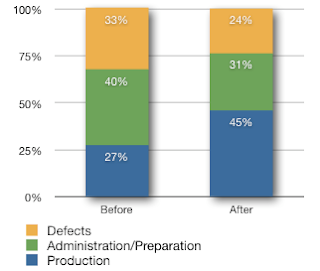IO Map for Process Design

I had reason to think about how to design processes recently, and just for fun I drew the Intermediate Objective map you see above. This is a process level IO map. It shows the necessary conditions that must be fulfilled in order to have a good process design. The map is meant to be generic, so you may have to adapt it to fit a special situation. In most cases, it can be used as is. Note though, that one of the necessary conditions for creating a good process is understanding how the goal of the process furthers the goal of the organization using the process. In other words, you need an IO map for the organization (or equivalent) in order to create a good process. I won't write a long-winded article with a detailed explanation of the map, at least not for now. However, if you have any questions, don't hesitate to ask.

